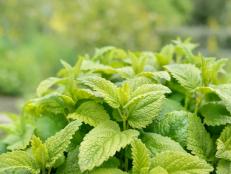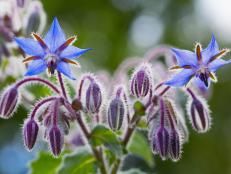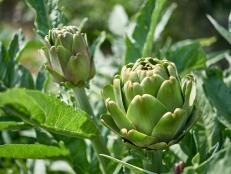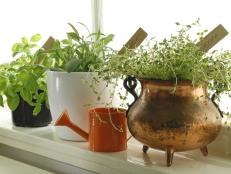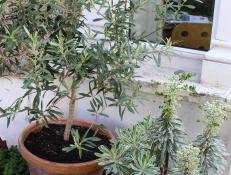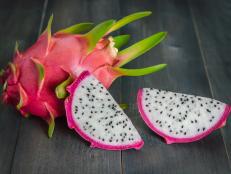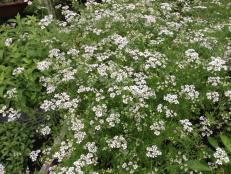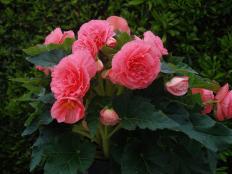Growing Parsley

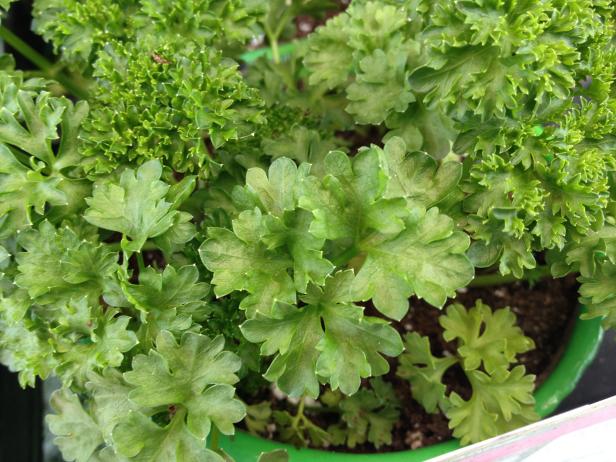
Poor parsley. This pretty green herb often dresses up dinner plates, but it’s usually left uneaten. The stems and leaves have a pungent, even bitter, taste.
But this member of the carrot family is a wonderfully healthy food, and a source of vitamins A and C, iron, calcium, folic acid, potassium and antioxidants that help maintain good eyesight.
It’s also high in the vitamin K needed for strong bones and proper blood clotting. Fortunately, you don’t have to eat huge amounts to benefit. The U.S. Department of Agriculture says two tablespoons of fresh parsley a day provides 125 micrograms (mcg) of vitamin K, more than the 90 mcg/day recommended for men and women age 19 and over.
It’s easy to add parsley to your diet. Flat-leafed parsley, Petroselinum crispum var. neapolitanum, is especially good for cooking and brightens the flavor in soups, stews and many other dishes. Curly parsley, or Petroselium crispum, the type used for garnishes, becomes more palatable when used to top salads and sandwiches.
As a biennial, parsley can take some frost, but it’s typically grown as an annual. It sets seeds in the second year, so replant before the flowers appear and the leaves become bitter.
To grow your own parsley, soak the seeds overnight, then sow them indoors in a seed-starting mix 10 to 12 weeks before the last spring frost. They may take 3 to 6 weeks to germinate. Harden off the seedlings (slowly acclimate them to the sun and outdoor temperatures) before transplanting them.
If you prefer, sow the seeds directly outdoors once the soil temperature reaches 50 degrees F. Parsley needs moist soil that drains easily and full sun to part shade. Thin the seedlings to every 8 to 10 inches. The plants have long taproots, so give them large containers if you grow them in pots.
Snip the stems and leaves as desired, leaving the center to keep growing. Put the cut stalks in a glass of water in the refrigerator to help them stay fresh.
For longer storage, tightly wrap the cut parsley stems in freezer bags. Many cooks say freezing is the best way to preserve its flavor.
You can also tie parsley stems together in small bundles and hang them in a warm, dry, well-ventilated spot. When the foliage becomes brittle, crumble it and store it in an airtight container.
While you can plant parsley in the fall in hardiness zones 7 or warmer, it’s usually best planted in early spring. Mulch the plants to help keep the roots moist (but don’t bury the crowns) and feed with a slow release fertilizer.
Don’t be surprised if you see the caterpillar stage of black swallowtail butterflies on your parsley. They love it, but rarely kill the plants. Instead of destroying the caterpillars, plant extra parsley. The beautiful butterflies are worth giving up some leaves.
Whiteflies that suck the juices out of your plants are a bigger problem. Try knocking them off with a blast of water from the hose. If they return, spray with a solution of one teaspoon of mild dishwashing detergent in a gallon of water. Spray early in the day, before temperatures rise and the sun is directly on the plants.
As a last result, spray your parsley with an insecticidal soap that is safe for use on edibles. Follow all package directions.
Enjoy your fresh parsley! Chew a few leaves to freshen your breath or chop it to add to meats, eggs, potatoes and vegetables.
To make parsley butter, process a half-cup of fresh, flat-leafed parsley with a stick of unsalted butter, two tablespoons of minced shallots, and two tablespoons of lemon juice. Add salt and black pepper to taste and minced garlic for zing. This herbal butter is delicious on grilled chicken, steaks, fish and steamed vegetables.
Parsley is also great as a bouquet garni (a French term that refers to a bundle of herbs simmered in soups, stews, and other dishes to add aroma and flavor). For a traditional bouquet garni, tie some parsley, bay leaves and thyme in a bit of cheesecloth and drop them into your cooking pot. Remove before serving.








